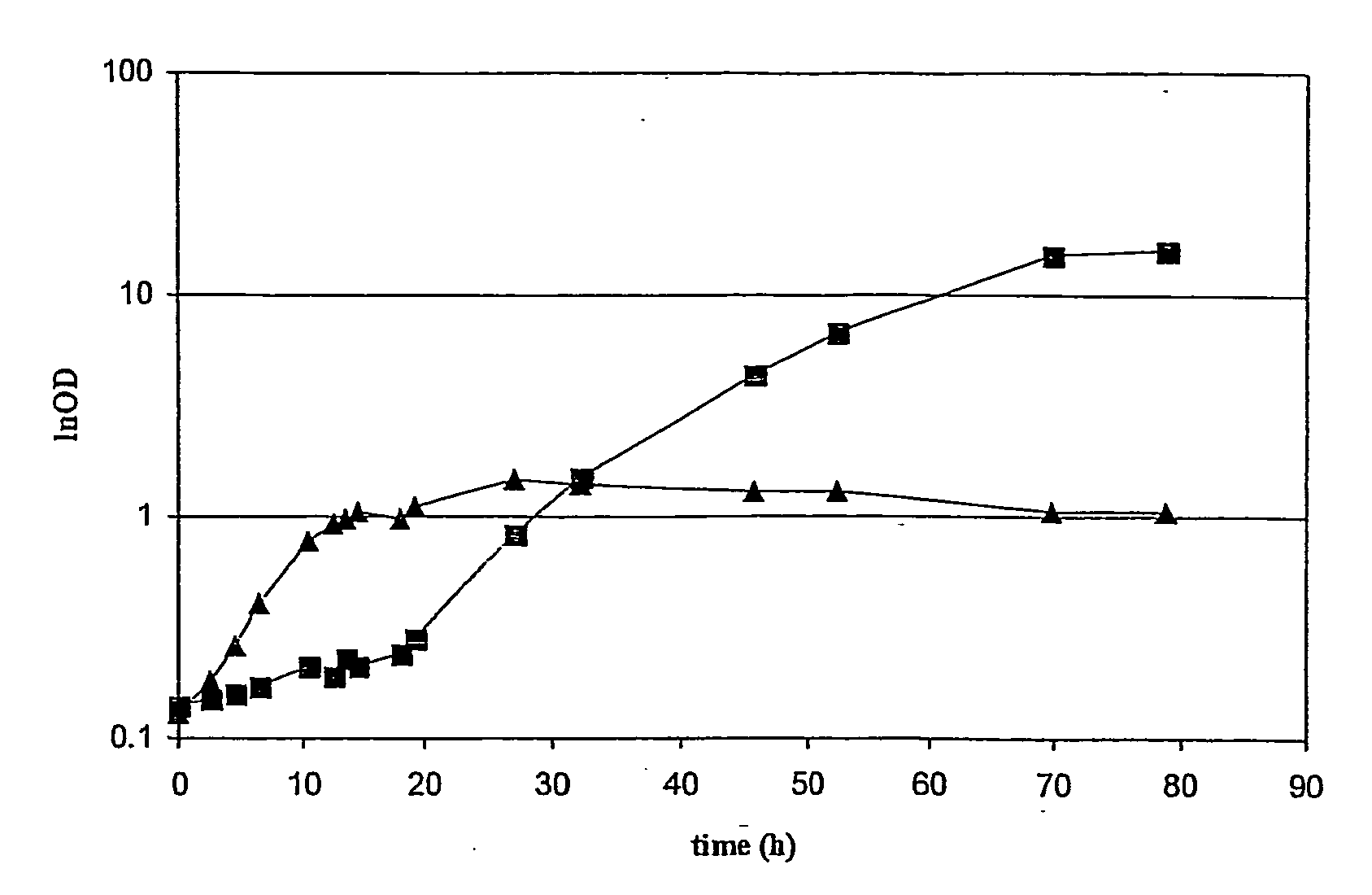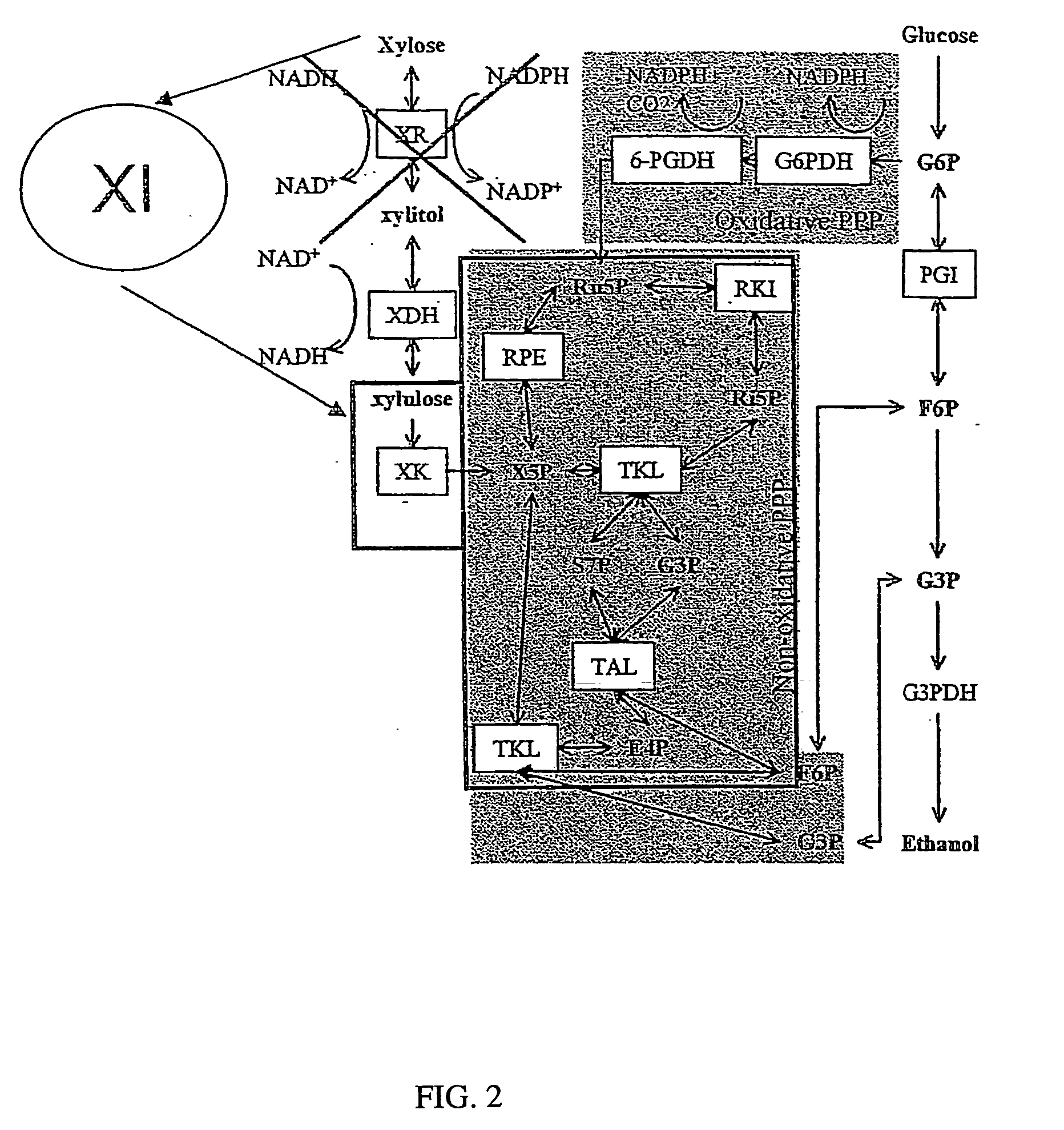Construction of new xylose utilizing saccharomyces cerevisiae strain
a technology of saccharomyces cerevisiae and xylose, which is applied in the direction of biofuels, enzymology, transferases, etc., can solve the problems of inability to ferment the pentose sugars xylose and arabinose, and the xylose is still poorly fermented to ethanol
- Summary
- Abstract
- Description
- Claims
- Application Information
AI Technical Summary
Problems solved by technology
Method used
Image
Examples
Embodiment Construction
[0021] The present invention thus claims a Saccharomyces cerevisiae strain expressing xylose isomerase (XI), overexpressing xylulokinase (XK), overexpressing the pentose phosphate pathway, non-expressing aldose reductase (AR) and being adapted to growth in mineral defined medium with xylose as sole carbon source.
[0022] In particular the strain expresses xylose isomerase derived from xylA gene. Overexpression of xylulokinase is obtained by adding a plasmid expressing XKS1 (Lönn et al. 2003) coding for xylulokinase. Overexpression of the pentose phosphate pathway is obtained by adding extra copies of the genes TAL1, TKL1, RPE1, RKI1 (Johansson & Hahn-Hägerdal 2002). Non-expression of aldose reductase (AR) is obtained be deleting the gene GRE3, to reduce formation of xylitol.
[0023] The construction of the strain will be described more in detail in the following.
Methods
[0024] Standard molecular biology techniques were used. (Sambrook et al. 1989) Lithium acetate method was used for...
PUM
| Property | Measurement | Unit |
|---|---|---|
| temperature | aaaaa | aaaaa |
| temperature | aaaaa | aaaaa |
| concentrations | aaaaa | aaaaa |
Abstract
Description
Claims
Application Information
 Login to View More
Login to View More - R&D
- Intellectual Property
- Life Sciences
- Materials
- Tech Scout
- Unparalleled Data Quality
- Higher Quality Content
- 60% Fewer Hallucinations
Browse by: Latest US Patents, China's latest patents, Technical Efficacy Thesaurus, Application Domain, Technology Topic, Popular Technical Reports.
© 2025 PatSnap. All rights reserved.Legal|Privacy policy|Modern Slavery Act Transparency Statement|Sitemap|About US| Contact US: help@patsnap.com



